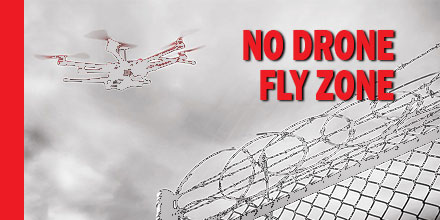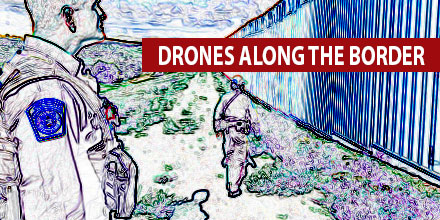
Call it the ultimate No Drone Fly Zone.
On Aug. 4 the Department of Defense (DoD) released classified guidelines for military personnel. The guidelines focused on available actions in the event of unauthorized drone intrusion over or around a military installation.
The Federal Aviation Administration (FAA), along with other inter-agency partners, helped develop the guidelines. It follows classified guidance that was previously provided to the services and installations in early July.
“Protecting our force remains a top priority and that’s why DoD issued the specific, but classified policy that details how DoD personnel may counter the unmanned aircraft threat,” said United States, Navy Capt. Jeff Davis.
A growing concern?
According to a Pentagon spokesman, the guidance is to help address growing concerns around safety and security of military installations, aviation and people.
And, certainly, drone use continues to explode across both recreational and commercial sectors.
The FAA predicts the number of hobbyists will increase to 355 million by 2021. Commercial drone users are expected to increase to 442,000 during that same time period.
Of course, all drone operators must adhere to FAA regulations and guidelines. Any flight operated beyond these regulations is considered unauthorized activity.
In April, the Pentagon and FCC announced a new rule which prohibited any drone flights within 400 feet of 133 domestic installations. Pilots caught violating the restriction were subject to arrest. However, that announcement did not mention any direct action the military could take to destroy or intercept the drones.
Tracking, disabling, destroying
If an unauthorized drone flight intrudes into military airspace, DoD personnel now have guidelines in place to respond to the threat.
Authorized actions include: tracking, disabling and destroying drones. Of course, the authorized action depends on the circumstance and the type of installation where the drone activity is detected.
“We support civilian law enforcement investigations in the prosecution of unauthorized UAS operations over military installations,” Davis said. “And though we do not discuss specific force-protection measures, we of course retain the right of self-defense. When it comes to UAS or drones operating over military installations, this new guidance does afford us the ability to take action to stop those threats.”
Drone operators can find additional flight regulation information at the Know Before You Fly website.
Before these guidelines, the military could take action to intercept a wayward drone. Those options included use of traditional ammunition to destroy the craft all the way to commandeering them via radio waves. In addition, intercepted crafts were subject to seizure “as part of investigations,” said Davis.
So, wayward flyers beware, intruding over or around any of these 133 installations could result in the loss of your craft.
 The steady advance of Small Unmanned Aircraft Systems (sUAS) into real-world environments, continues.
In September, the U.S. Customs and Border Protection (CBP) announced a new pilot program. The program, executed by the U.S. Border Patrol, evaluates the use of sUAS within the CPB operational environment.
Tests sites, already identified, include three USBP sectors. The program kicks off within the Tucson sector with plans to expand to Rio Grande Valley and Swanton later this year.
The steady advance of Small Unmanned Aircraft Systems (sUAS) into real-world environments, continues.
In September, the U.S. Customs and Border Protection (CBP) announced a new pilot program. The program, executed by the U.S. Border Patrol, evaluates the use of sUAS within the CPB operational environment.
Tests sites, already identified, include three USBP sectors. The program kicks off within the Tucson sector with plans to expand to Rio Grande Valley and Swanton later this year.

 Call it the ultimate No Drone Fly Zone.
On Aug. 4 the Department of Defense (DoD) released classified guidelines for military personnel. The guidelines focused on available actions in the event of unauthorized drone intrusion over or around a military installation.
The Federal Aviation Administration (FAA), along with other inter-agency partners, helped develop the guidelines. It follows classified guidance that was previously provided to the services and installations in early July.
“Protecting our force remains a top priority and that’s why DoD issued the specific, but classified policy that details how DoD personnel may counter the unmanned aircraft threat,” said United States, Navy Capt. Jeff Davis.
Call it the ultimate No Drone Fly Zone.
On Aug. 4 the Department of Defense (DoD) released classified guidelines for military personnel. The guidelines focused on available actions in the event of unauthorized drone intrusion over or around a military installation.
The Federal Aviation Administration (FAA), along with other inter-agency partners, helped develop the guidelines. It follows classified guidance that was previously provided to the services and installations in early July.
“Protecting our force remains a top priority and that’s why DoD issued the specific, but classified policy that details how DoD personnel may counter the unmanned aircraft threat,” said United States, Navy Capt. Jeff Davis.
